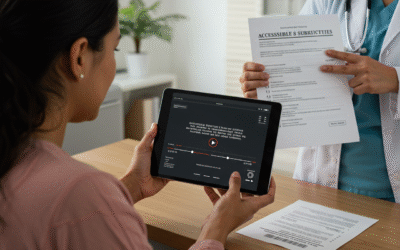Introduction
Multicenter trial localization is more than translation. It means harmonizing terminology, synchronizing versions, and ensuring collected data are comparable across sites and countries. Clear processes reduce regulatory risk, boost data quality and speed analysis.
Core principles for harmonization
- Centralized glossary: create and maintain a master glossary with clinical terms, abbreviations and units. Track changes and control access.
- Shared translation memory (TM): a unified TM prevents terminology drift and speeds deliveries.
- Local SME role: each site should have a clinical reviewer to validate cultural adaptation and local jargon.
- Strict version control: tag every document (vX.Y, date, owner) and push updates across all sites.
Recommended workflows (practical steps)
- Central brief: define scope, CRF/eCRF templates, languages and localization criteria before translation.
- Translation + linguistic validation: include back-translation for critical segments (consents, instructions).
- Technical SME review: local clinical validation to confirm semantic and operational equivalence.
- Field pilot: test localized CRF/eCRF on a small sample to catch ambiguities.
- Release & sync: distribute final version with changelog and training as needed.
Data compatibility
- Ensure labels, date formats, units and mandatory fields are consistent.
- Design eCRFs with validations that prevent translations from breaking field logic (e.g., numbers in text fields).
- Document mappings between language variants to ease pooled analysis.
QA and metrics
- Suggested KPIs: % glossary match, queries per site, avg localization time per document, critical errors found in pilot.
- Periodic audit: milestone reviews and traceable evidence.
Conclusion
Effective multicenter trial localization safeguards data integrity and regulatory readiness. At SumaLatam we design workflows, master glossaries and validation steps to harmonize language and data across sites. Contact us for a localization audit or linguistic pilot





